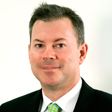Which Way Is the Fed Headed?
It has been tougher than usual to divine the Federal Reserve's intentions on interest rates.

Although no Federal Reserve action on interest rates is imminent, you could be forgiven for thinking otherwise. Usually taciturn Fed officials have been particularly vocal lately, opining on the state of the economy and the next step the central bank might take. The problem is that Fed officials are pointing in different directions.
SEE ALSO: Economic Issues That Will Drive the 2012 Election
Vice Chairman Janet Yellen recently said that there was little prospect of serious inflation anytime soon and thus little likelihood that the Fed would have to raise interest rates to fight inflation before 2015.
From just $107.88 $24.99 for Kiplinger Personal Finance
Become a smarter, better informed investor. Subscribe from just $107.88 $24.99, plus get up to 4 Special Issues

Sign up for Kiplinger’s Free Newsletters
Profit and prosper with the best of expert advice on investing, taxes, retirement, personal finance and more - straight to your e-mail.
Profit and prosper with the best of expert advice - straight to your e-mail.
Her call for a "highly accommodative" Fed policy was interpreted by many as a signal that the Fed was closer to another round of bond swaps aimed at pushing down long-term rates to stimulate economic growth.
Meanwhile, Narayana Kocherlakota, president of the Federal Reserve Bank of Minneapolis, warned that trillions of dollars of lending by the Fed had created an imminent threat of inflation, and that rate hikes might be needed this year.
"It looks like greater transparency isn't making things any clearer," says one former top Fed official, referring to Chairman Ben Bernanke's policy of making more of the bank's internal deliberations public. Bernanke's theory: More sunshine would allow the markets to better and more clearly anticipate Fed actions, and reduce the likelihood of abrupt shifts in financial markets arising from misinterpretations or miscalculations of forthcoming policy shifts.
Alas, the picture probably won't be clearer after this week's meeting of the Federal Open Market Committee, the Fed body that makes decisions on interest rates and monetary policy. No amount of transparency can overcome the lack of sufficient evidence about the health of the economic recovery and the extent of inflationary pressure to come down firmly on one side of the fence or another at this time. Advocates on both sides of the debate can credibly argue their view, but neither side has enough firepower to win the battle.
Inflation "doves," such as Yellen and New York Federal Reserve Bank President William Dudley, see another recession as a greater risk than sharply rising inflation. They lean toward more economic stimulus by swapping short-term Fed debt for long-term debt, a move that might lower rates for most loans by 100 to 200 basis points. These doves got some help from March's weak jobs report: Only 120,000 jobs were added, less than half the average for the previous three months and below the rate that would maintain moderate economic growth.
In contrast, inflation "hawks," such as Kocherlakota and the heads of the Fed's Richmond and Dallas banks see runaway price increases as the greater threat. Since the financial crisis, the Fed has tripled its lending to banks, and the hawks believe that this extra credit will trigger runaway inflation long before 2015. The hawks have the steeper hill to climb, however, since rate hikes anytime soon would reduce economic growth -- already expected to be only a bit more than 2% this year. They did get some ammunition in March's inflation report: Although inflation all but disappeared in late 2011, it is now running at a rate of a little above the 2% level, which is the Fed's target. Higher gasoline prices this summer could raise that even more.
Neither the hawks nor the doves can yet persuade enough of their colleagues to forge a consensus, the usual approach at the Fed, even when it was led by the famously powerful and independent Alan Greenspan. Although often described as a dove, Bernanke isn't one. Instead he plays the role of an honest broker. Knowing that any hotly contested FOMC decision will be loudly and publicly protested by the losing camp, and that he will have to defend it to Congress, Bernanke won't pick sides.
While there is only one clear hawk on the policymaking committee, the chairman will not ignore dissent from Fed bank presidents outside the FOMC. Nor will he endorse new bond swaps without a substantial majority of Fed officials favoring them.
Here's what's needed for advocates on either side to move their colleagues across the dividing line and assemble the critical mass required for a change in course:
Doves must show strong evidence that the economy is slowing significantly. That means lackluster job creation again in April and probably in May as well, building on the lousy March report. Over the decades, it hasn't been unusual to see one or two months of unexpectedly low job creation in the midst of what turns out to be healthy and sustained recoveries. But three months is unusual and almost always signals a sharp slowdown or recession. Still, even three months of slow job creation probably wouldn't be enough on its own. The likelihood of a slowdown would need to be corroborated by other data on manufacturing, personal and business spending.
Hawks have a tougher job. They have fewer sympathizers among their colleagues, and the level of inflation needed to win a rate increase is substantial. Inflation would probably have to at least double from its current level and stay high for at least six months to convince dovish Fed officials that runaway price increases were a real threat.
Odds are that neither the doves nor the hawks will carry the day in 2012. April's job numbers may not be great, but we believe that job creation will get back on track in May and keep the economy growing moderately in 2012, obviating the need for additional easing by the Fed. And we expect inflation to ease in the coming months, resulting in a moderate rate of about 2% for the year, postponing the need for rate hikes for at least a couple of years.
Profit and prosper with the best of Kiplinger's advice on investing, taxes, retirement, personal finance and much more. Delivered daily. Enter your email in the box and click Sign Me Up.

-
 Is Your Emergency Fund Running Low? Here's How to Bulk It Up
Is Your Emergency Fund Running Low? Here's How to Bulk It UpIf you're struggling right now, you're not alone. Here's how you can identify financial issues, implement a budget and prioritize rebuilding your emergency fund.
-
 Guide to How All-Assets Planning Offers a Better Retirement
Guide to How All-Assets Planning Offers a Better RetirementAn "all-asset" strategy would integrate housing wealth and annuities with traditional investments to generate more income and liquid savings for retirees.
-
 Forget FIRE: Why ‘FILE’ Is the Smarter Move for Child-Free DINKs
Forget FIRE: Why ‘FILE’ Is the Smarter Move for Child-Free DINKsHow shifting from "Retiring Early" to "Living Early" allows child-free adults to enjoy their wealth while they’re still young enough to use it.
-
 What to Expect from the Global Economy in 2026
What to Expect from the Global Economy in 2026The Kiplinger Letter Economic growth across the globe will be highly uneven, with some major economies accelerating while others hit the brakes.
-
 Amid Mounting Uncertainty: Five Forecasts About AI
Amid Mounting Uncertainty: Five Forecasts About AIThe Kiplinger Letter With the risk of overspending on AI data centers hotly debated, here are some forecasts about AI that we can make with some confidence.
-
 Worried About an AI Bubble? Here’s What You Need to Know
Worried About an AI Bubble? Here’s What You Need to KnowThe Kiplinger Letter Though AI is a transformative technology, it’s worth paying attention to the rising economic and financial risks. Here’s some guidance to navigate AI’s future.
-
 Will AI Videos Disrupt Social Media?
Will AI Videos Disrupt Social Media?The Kiplinger Letter With the introduction of OpenAI’s new AI social media app, Sora, the internet is about to be flooded with startling AI-generated videos.
-
 What Services Are Open During the Government Shutdown?
What Services Are Open During the Government Shutdown?The Kiplinger Letter As the shutdown drags on, many basic federal services will increasingly be affected.
-
 The Economy on a Knife's Edge
The Economy on a Knife's EdgeThe Letter GDP is growing, but employers have all but stopped hiring as they watch how the trade war plays out.
-
 Apple Readies for AI Upgrade with New iPhones
Apple Readies for AI Upgrade with New iPhonesThe Kiplinger Letter The tech giant has stumbled when it comes to artificial intelligence, but a new batch of iPhones will help it make headway.
-
 Japan Enters a New Era of Risk and Reform
Japan Enters a New Era of Risk and ReformThe Kiplinger Letter Japan has entered a pivotal moment in its economic history, undertaking ambitious policy and structural reforms to escape from decades of stagnation.